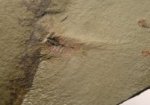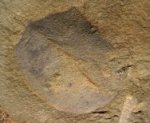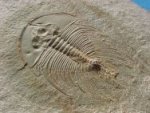Pioche Formation
Pioche Formation - a Burgess Shale Type Lagerstätte |
Related
Interest: Also
see: |
Fossils of the Pioche Shale Formation - A Burgess Shale Type LagerstätteThe
Pioche Formation, also called the Pioche Shale, varies from
early to middle Cambrian.
Pioche Formation fits the category of a Burgess shale-type Lagerstätte.
The Pioche Formation contains a diverse early Cambrian to middle
Cambrian biota, including a “Terror Of The Cambrian”,
Anomalocaris,
a large trilobite
fauna, brachiopods,
early crinoids
(eocrinoids), hyolithids,
phyllocarid Pioche Shale Formation Location and Stratigraphy
Generally
speaking, Burgess Shale–type faunas are characterized
by a distinct early Paleozoic temporal range, and a distribution
in geographic locality and concomitant paleoenvironments. They
are found across almost the entire Interestingly, the extinction of trilobite Redliichia suborder Olenellina can be found near the top of the Combined Metals Limestone members of the Pioche Formation. Laurentia at the time was an independent continent, after breaking away from the supercontinent Pannotia in the Precambrian about 540 million years ago. The Olenellid species diversity is very rich below this Laurentian boundary and include: Olenellus fowleri, Olenellus (Paedeumias) chiefensis, Olenellus (Paedeumias) terminatus, Bolbolenellus brevispinus, Nephrolenellus geniculatus, Olenellus gilberti, and Olenellus howelli. The Comet Shale Member of the Pioche Formation in Nevada spans the transition of Early to Middle Cambrian which saw the extinction of the Olenellid trilobites. It is just younger than comparable taxa from the Chengjiana Biota of Yunnan Province, China and just older than the Burgess Shale Fauna of British Columbia, Canada. Pioche Formation References |
Fossil
Museum Navigation:
Home Geological Time Paleobiology Geological History Tree of Life Fossil Sites Fossils Evolution Fossil Record Museum Fossils |



